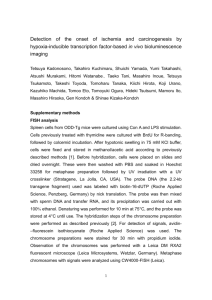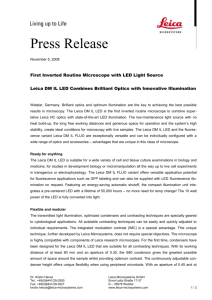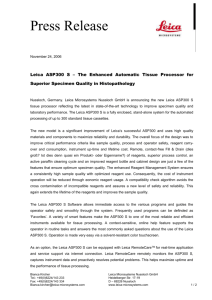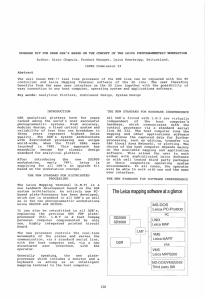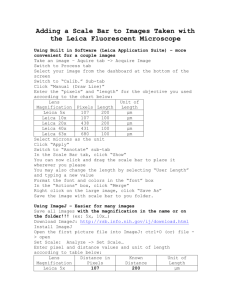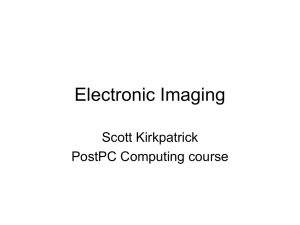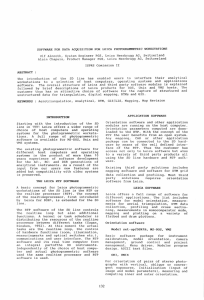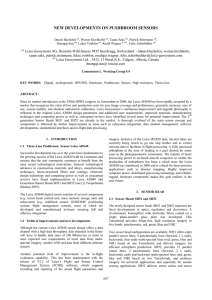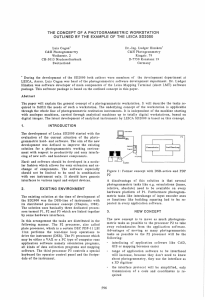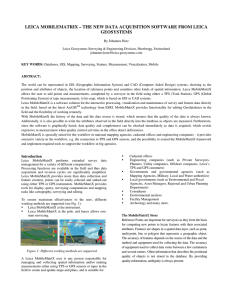NEW HARDWARE FEATURES OF THE ... A. Chapuis, Product Manger PGS, ...
advertisement
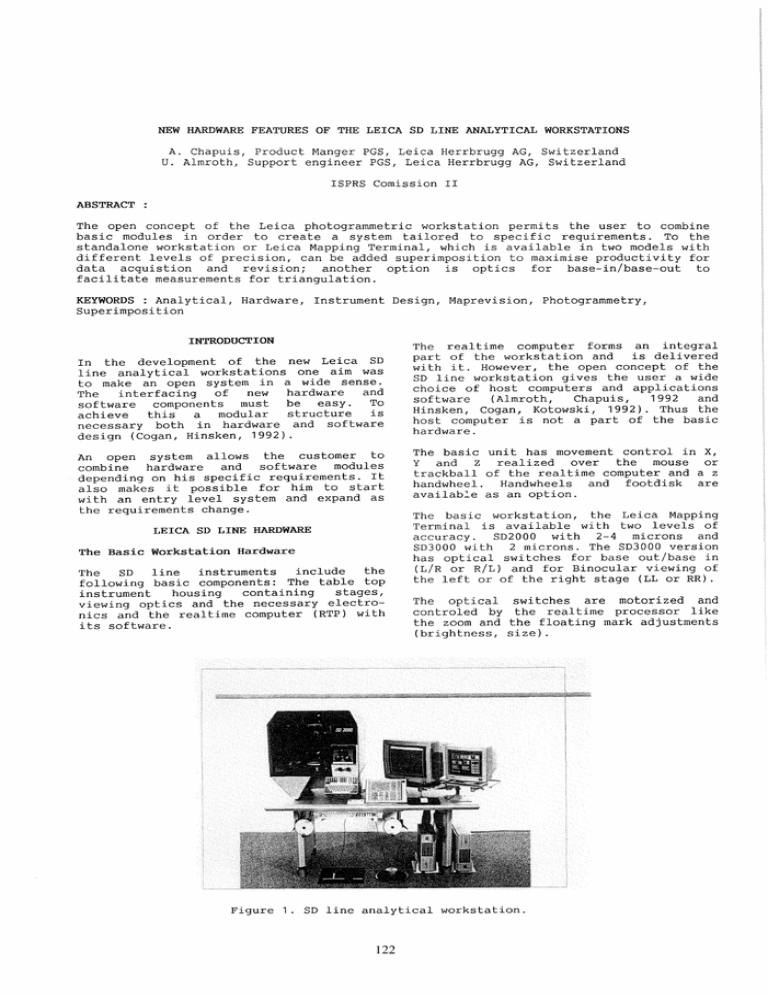
NEW HARDWARE FEATURES OF THE LEICA SD LINE ANALYTICAL WORKSTATIONS A. Chapuis, Product Manger PGS, Leica Herrbrugg AG, Switzerland U. Almroth, Support engineer PGS, Leica Herrbrugg AG, Switzerland ISPRS Comission II ABSTRACT The, open conce~t of the Leica photogrammetric workstation permits the user to combine basl.c modules l.n order to create a system tailored to specific requirements. To the s~andalone workstation or Leica Mapping Terminal, which is available in two models with dl.fferent ~ev~ls of precis~o~, can be added superimposition to maximise productivity for dat~ ,acqul.stl.on and reVl.Sl.on; another option is optics for base-in/base-out to facl.ll.tate measurements for triangulation. KEYWORDS : Analytical, Hardware, Instrument Design, Maprevision, Photogrammetry, Superimposition INTRODUCTION In the development of the new Leica SD line analytical workstations one aim was to make an open system in a wide sense. The interfacing of new hardware and software components must be easy. To achieve this a modular structure is necessary both in hardware and software design (Cogan, Hinsken, 1992). An open system allows the customer to combine hardware and software modules depending on his specific requirements. It also makes it possible for him to start wi th an entry level system and expand as the requirements change. LEICA SD LINE HARDWARE The Basic Workstation Hardware The SD line instruments include the following basic components: The table top instrument housing containing stages, viewing optics and the necessary electronics and the realtime computer (RTP) with its software. The realtime computer forms an integral part of the workstation and is delivered with it. However, the open concept of the SD line workstation gives the user a wide choice of host computers and applications software (Almroth, Chapuis, 1992 and Hinsken, Cogan, Kotowski, 1992). Thus the host computer is not a part of the basic hardware. The basic unit has movement control in X, Z realized over the mouse or Y and trackball of the realtime computer and a z handwheel. Handwheels and footdisk are availab~e as an option. The basic workstation, the Leica Mapping Terminal is available with two levels of accuracy. SD2000 with 2-4 microns and SD3000 with 2 microns. The SD3000 version has optical switches for base out/base in (L/R or R/L) and for Binocular viewing of the left or of the right stage (LL or RR). The optical switches are motorized and controled by the real time processor like the zoom and the floating mark adjustments (brightness, size). Figure 1. SD line analytical workstation. 122 Image Superimposition For SD2000 and SD3000 an image superimposition system, Coloriss, has been developed. The system is availble in mono and stereo versions. Representation of several colors and different linetypes is possible. The Coloriss hardware is integrated with the basic workstation hardware on the real time computer level. Thus drivers are available for Leica as well as for third party software packages. The Coloriss is an efficient tool for the user who wants increase productivity in data acquisition and map revision. REFERENCES Almroth, U., Chapuis, A. 1992. Software for Data acquisition for Leica photogrammetric workstations. ISPRS Congress, Com II, Washington D.C. Cogan. L., Hinsken. L., 1992. The Concept of a photogrammetric workstation outlined by the example of the Leica SD2000. ISPRS Congress, Com II, Washington D.C. Hinsken. L., Cogan. L., Kotowski. R., 1992. A new MS DOS based integrated software package for triangulation and data collection for close-range applications. ISPRS Congress, Com V, Washington D.C. 123
